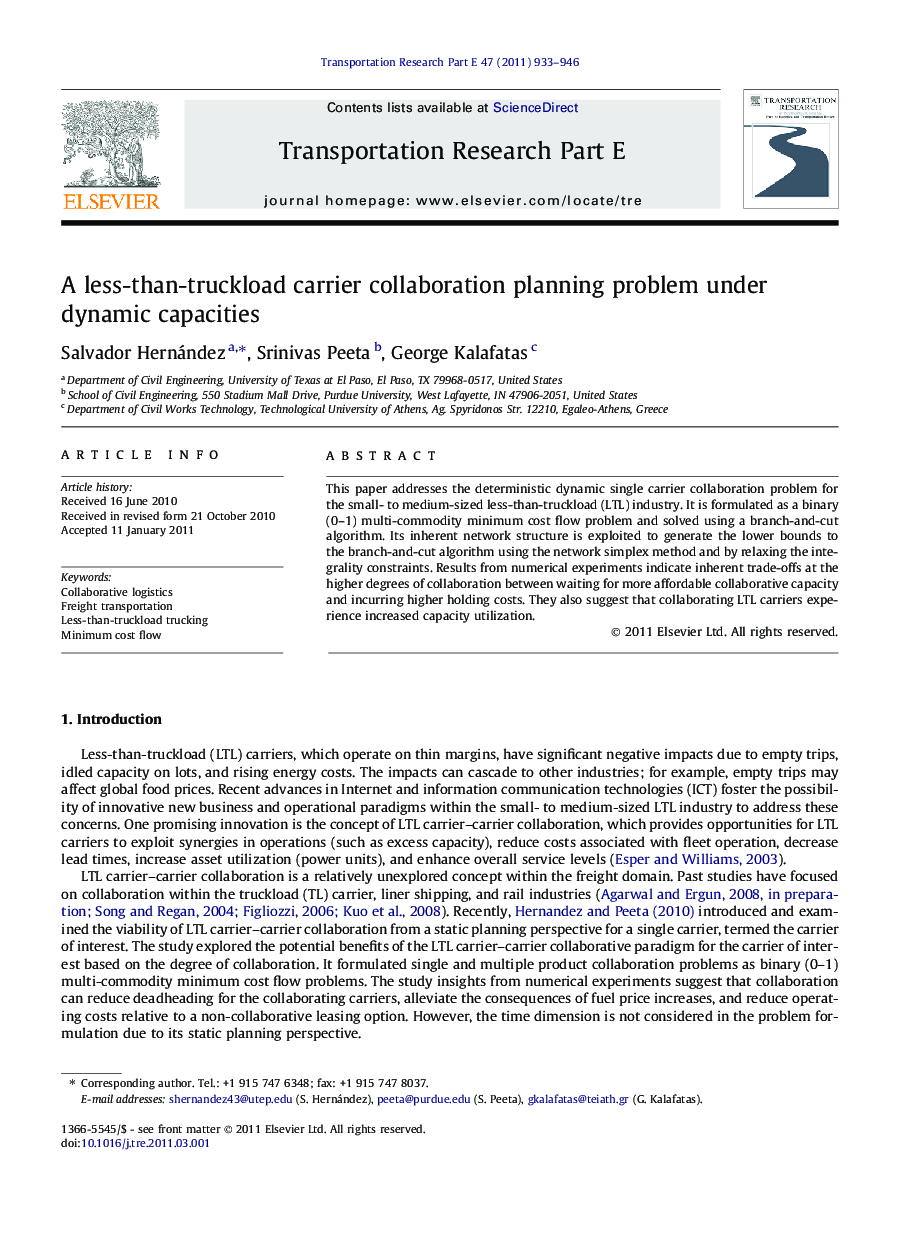| کد مقاله | کد نشریه | سال انتشار | مقاله انگلیسی | نسخه تمام متن |
|---|---|---|---|---|
| 1023662 | 941639 | 2011 | 14 صفحه PDF | دانلود رایگان |

This paper addresses the deterministic dynamic single carrier collaboration problem for the small- to medium-sized less-than-truckload (LTL) industry. It is formulated as a binary (0–1) multi-commodity minimum cost flow problem and solved using a branch-and-cut algorithm. Its inherent network structure is exploited to generate the lower bounds to the branch-and-cut algorithm using the network simplex method and by relaxing the integrality constraints. Results from numerical experiments indicate inherent trade-offs at the higher degrees of collaboration between waiting for more affordable collaborative capacity and incurring higher holding costs. They also suggest that collaborating LTL carriers experience increased capacity utilization.
► We model a small-to medium-sized less-than-truckload carrier collaboration problem.
► Holding costs are a key factor for the carrier of interest to consider while forming the collaborative routes.
► As the degree of collaboration increases, the relative attractiveness of acquiring collaborative capacity also increases compared to the short-term leasing option, leading to increased capacity utilization.
► We conclude that collaboration can be a viable strategy for reducing the effects of delays in a highly competitive industry where time has a direct impact on profits.
Journal: Transportation Research Part E: Logistics and Transportation Review - Volume 47, Issue 6, November 2011, Pages 933–946